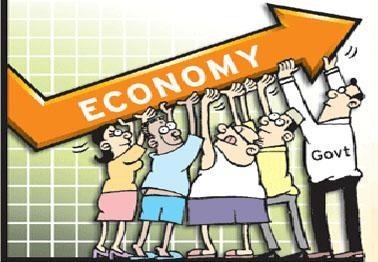Editorial on Budget by The Tribune
Focus is on masses, not classes
It is a budget for the masses, not classes. It offers small giveaways here and there but takes care not to hurt anybody ahead of assembly elections. The 2010-11 Union Budget’s thrust is on the social sector in keeping with the UPA government’s goal of inclusive growth. It carries the stamp of Congress president Sonia Gandhi. Prime Minister Manmohan Singh’s reforms may have to wait. Finance Minister Pranab Mukherjee is a pragmatic politician and he is best suited for building a consensus on controversial reforms like the goods and services tax (GST), diesel decontrol, labour law amendments, foreign investment in multi-brand retail, banking and PSU privatisation.
The GST, when implemented, would have far-reaching consequences on the economy in terms of lowering taxes and raising revenue by curbing tax evasion and the spread of black money.
Benefits for classes are limited. The salaried class may be disappointed by a modest hike in the tax exemption limit but there is a major reason to cheer. Those having salary as the only income will not have to file returns any more.
The Budget has reduced the age limit for senior citizens from 65 to 60 for being entitled to the tax exemption limit of Rs 2, 50,000, while for those above 80 a new tax exemption limit of Rs 5,00,000 has been created. Health check-ups in private hospitals will become more expensive. Domestic and foreign travel will cost more as also eating out in AC restaurants.
This time the fair sex has got no special treatment. Those fond of branded clothes will feel the pinch.
Aanganwari workers have a reason to rejoice as their pay has been justifiably doubled.
Soldiers suffering 100 per cent disability in service will get Rs 9 lakh compensation on a par with security personnel fighting the Maoists.
In the clash between inflation and growth the Finance Minister has favoured the former, which is desirable both politically and morally since the fruits of growth are enjoyed by a small section. From March 2012 those living below the poverty line will start getting cash instead of subsidised fertilisers and fuel. Nandan Nilekani’s Adhaar scheme, when implemented, would make this possible.
Sonia Gandhi’s favourite project, the National Food Security Bill, is on the table but Pranab Mukherjee has not given details of the fiscal impact of its implementation. Higher spending on education, health and infrastructure is welcome though it is still below the desirable levels.
To control inflation and achieve double-digit growth it has often been suggested that agriculture should be rejuvenated. The budget has increased credit flows to farmers by Rs 1lakh crore.
Farmers who repay their loans in time will have to pay 3-4 per cent lower interest than the market rates. To step up production and productivity, the budget provides Rs 300 crore each for pulses, oilseeds, vegetables and nutri-cereals like millet and maize. Since 40 per cent of food items go waste in the absence of adequate storage and processing, the budget focusses on some such grey areas. Cold storage chains will get infrastructure status, which means cheaper credit. This may attract higher private investment and help eliminate bottlenecks in food supplies.
Industry had feared a rollback of tax benefits given in 2008 to help it cope with global slowdown. That has not happened. Instead the surcharge on domestic companies has been cut to 5 per cent from 7.5 per cent. The minimum alternate tax (MAT) has been slightly raised from 18 per cent to 18.5 per cent. The Sensex shot up after the budget but the gains were trimmed to 122 points by the close. Currently, business confidence is low as interest rates are hardening. The surge in global oil prices due to trouble in the Middle East has led to capital outflows.
For foreign institutional investors (FIIs) a high fiscal deficit is also a matter of concern. The Finance Minister has sent a positive message by bringing down fiscal deficit to 5.1 per cent. FIIs, however, are skeptical about his claims of bringing fiscal deficit further down to 4.6 per cent and ensuring 9 per cent growth in a difficult year ahead. One positive is the government will resort to lower market borrowings and this will reduce pressure on money supply and subsequently on interest rates. High interest rates raise the cost of capital and hurt growth. All in all, given the constraints — political and global — it is hard to find much fault with the budget. Its goal of inclusive growth is right. The fiscal deficit may be under control but it is governance deficit which is becoming unmanageable. Elections are won not just by tall promises but by strong performance.
Bihar has shown votes follow development.






